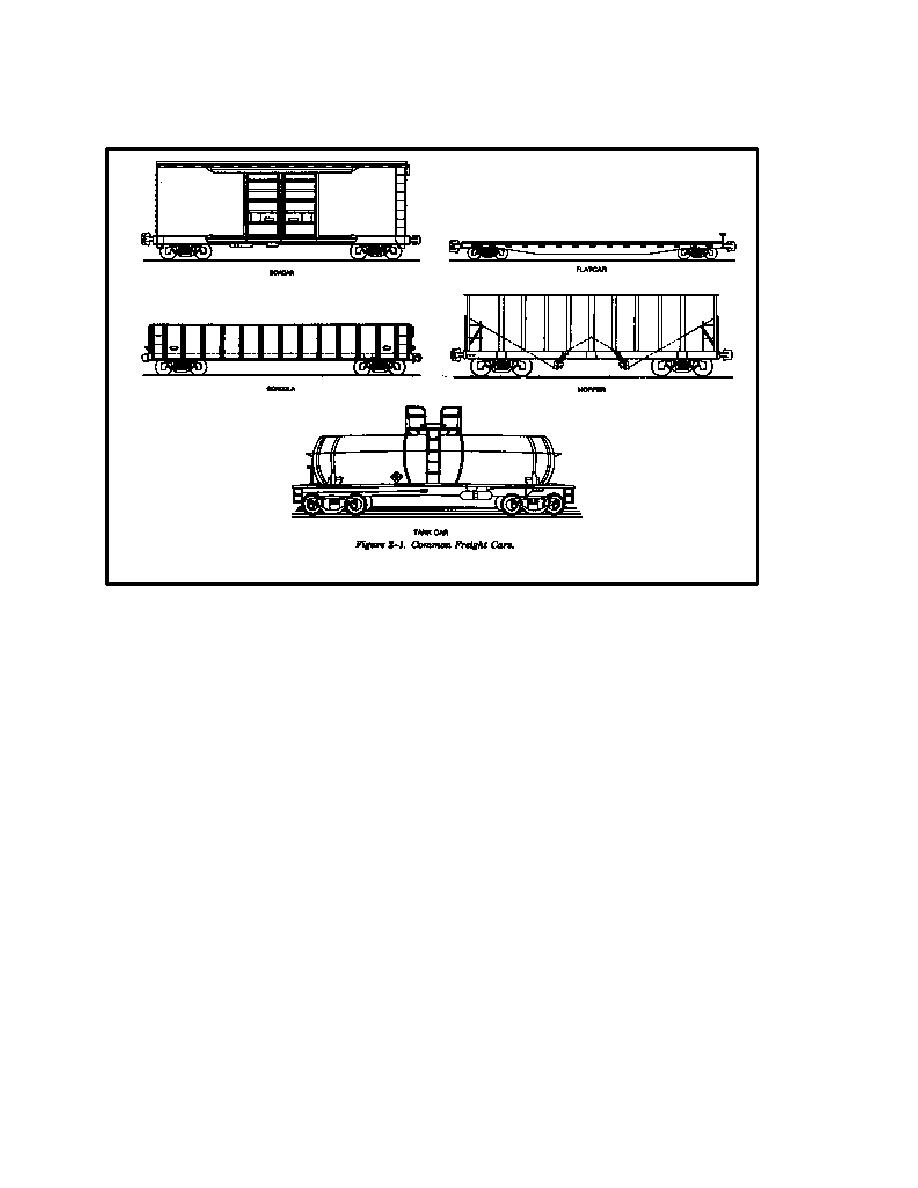
CEMP-E
TI 850-02
AFMAN 32-1125(I)
1 MARCH 2000
Figure 2-1. Common Freight Cars
3. TRAFFIC VOLUME. In addition to the type of traffic, the amount of traffic must also be estimated.
This information should include:
a. Maximum number of cars (for each traffic type) that might be on the installation at any one time,
including empty cars.
b. Longest train that needs to be accommodated into or out of the installation.
c. Maximum number of cars (of all types) that might be on the installation at any one time, including
empty cars.
d. Maximum number of cars that each loading facility or terminal area might be required to handle in a
single loading or unloading cycle.
4. WHEEL LOADS.
a. Track structure design is greatly influenced by the magnitude of the wheel loads that the track must
support. While many different types of cars and loadings may be handled aboard an installation, for
planning purposes the design wheel load is based on the heaviest type of loaded car that will most
commonly run over a particular track.
b. In many cases, the wheel loads from an engine (either Army-owned or from the commercial carrier)
will represent the heaviest single load on the track. However, the number of wheels from loaded cars will
2-3


 Previous Page
Previous Page
